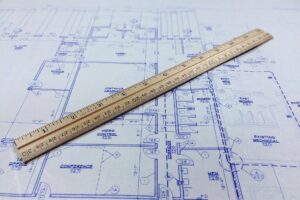Selecting the Right Building Lot for You
One of the most important steps in the planning process of your new home is to make sure you will be building your ideal home in your ideal location. It doesn’t matter if you plan on building a home in the country, the suburbs, or the city, it is critical to thoroughly investigate the area around your future home. Take a drive or walk around the neighborhood at different times and days of the week. Make sure to research current and prospective locations of highways, railways, and airports, along with sewage treatment plants and landfills. Evaluate the outlook of growth in the neighborhood. Fast-growing areas allow for more options in lots and subdivisions, but the current infrastructure, school systems, and public services may not be able to accommodate the growing population and will need time to catch up.
Examine What Your Average Day Would Be Like in The Area
Assess what your commute would be like. If you don’t work from home, practice your work commute by traveling to your work at the times and days of the week you will be commuting from home. Also check outdistances of other places you plan to frequently visit, such as stores, schools, churches, parks, or health services. If you have children or plan on having them in the children, investigate the area’s schools. Look for the quality of the education provided and any extra-curricular activities that may be relevant to your children. If you have a dog or outdoor cat, you might also want to consider what the area offers in that regard. You don’t want your cat wandering around a place with a lot of traffic, and if your dog is very active, a dog park or a place that is easy to walk him maybe something you would like. Places with good educational systems and recreational areas are also an important factor in the eventual resale of the house.
Find What Part of the Neighborhood is Best for You
Once you’ve found the right subdivision or general area for you, hone your search to what lot is right for you. Consider the pros and cons of each lot. Lots close to subdivision entries have higher traffic, than secluded cul-de-sacs, but are also easier to access. Cul-de-sacs are great if are safer if you have children, but the wedge design can make snow removal and lawn maintenance more difficult. You may also have to re-examine the design of your house if you want to fit it in a cul-de-sac. Corner homes allow for garages on the side, and typically have more landscaping, however, more landscaping means more upkeep. If your neighborhood has sidewalks, the amount of sidewalk snow removal will potentially double. Corner lots also have increased traffic. Home at the end of a T intersection will have the problem of headlights shining on their house from traffic.
The Direction of Your House Matters
The direction your house is facing will also affect its livability. A house with a mass of windows on the south side will take in the most sunlight. Windows on the east will take in most sunlight during the morning and western windows will take in the sunlight most sunlight at the end of the day. Having a southern or western-facing house will also help melt ice and snow during the winter months. If you’re a gardener, you want to have your garden orientated to receive the most sunlight. Having a corner house offers more flexibility since you can get more sunlight from the side. The direction your house faces also has an effect on the efficiency of your home’s heating and cooling!
Inspect What’s Underneath
Another natural element to consider is the ground. Lots in subdivisions benefit from the research and scrutiny of road, sewer, and electrical contractors. To satisfy creditors and public officials, a subdivision’s developers and contractors must submit their property to a flurry of tests that ensure the land is suitable for houses. Acreage sites might not offer such reassurances, so it’s wise to find out what lurks beneath the surface. Unstable hillsides, sinkholes, and other problems can turn your dream home into a nightmare. The existence of bedrock under the topsoil can drive up construction costs. The price of a soil test is a bargain if the site you’re considering has serious problems.
When you do your homework, choosing the right home site is a much easier task. But remember that even the best site has its pros and cons. The right lot is often a compromise. It’s important to keep your options open and to understand exactly what you’re getting as you narrow your selections and finally settle on a lot that is best for you. Once you’re ready to build, contact Hagen Homes and we can begin on your new home!

